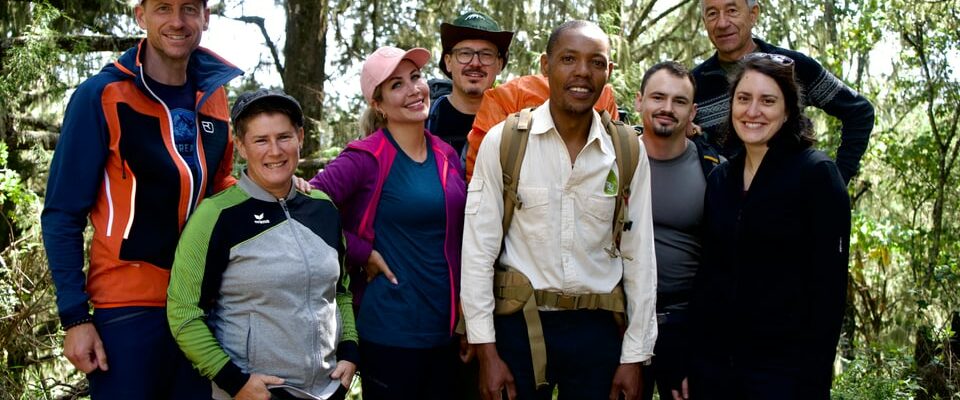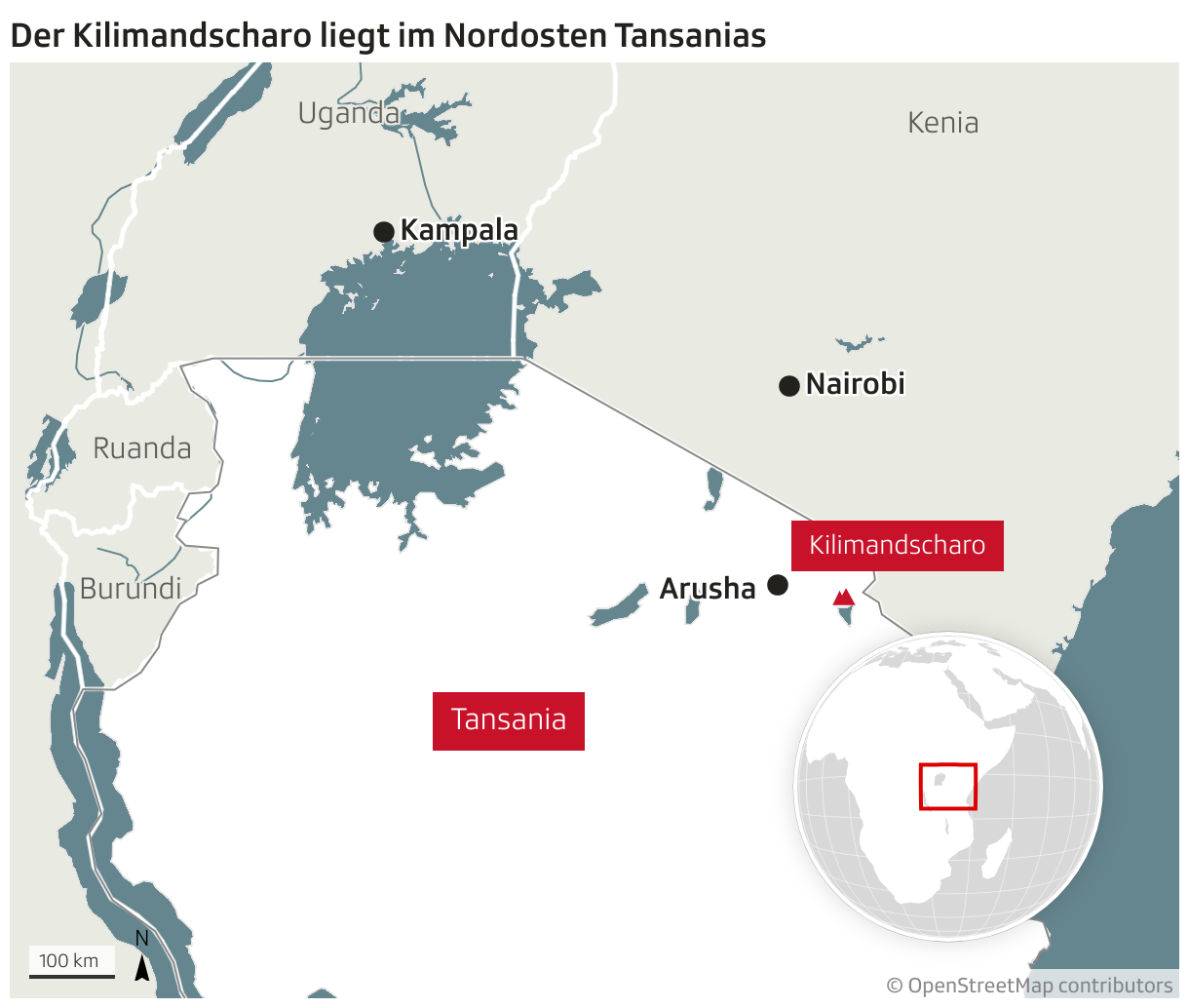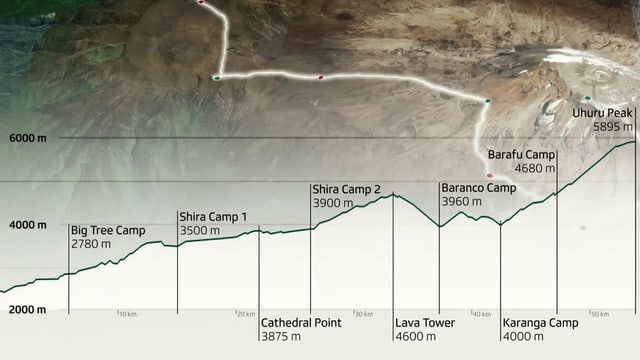«I had this dream when I was 14 years old and I realized that I am so close to myself when I hike. I knew now it was time to go to the mountain.”
Many Swiss people feel the same way as Damaris Bach. Kilimanjaro is one of the most popular and most climbed mountains in the world. At 5,895 meters high, it is also the highest free-standing mountain in the world and an attractive dream destination because it is still relatively easy to climb.
SRF wanted to know why so many Swiss people trek to the roof of Africa, but also what effect mass tourism has on the mountain, and dared the adventure with three averagely trained women and men. Farmer Ursula Mürner is one of the participants. She says: “Kilimanjaro is something within reach for me, I don’t really like snow with crampons and an ice ax.”
Legend:
They trek to the roof of Africa: (from left) Daniel Bertschinger, Ursula Mürner, Sandra Huggenberger, Klaus Homburg, mountain guide Priskus Peter, Fabian Schibler, Kurt Hegglin, tour guide and Damaris Bach.
SRF
Participant Daniel Bertschinger, sales manager and former middle-distance runner, likes challenges: “I want to feel and experience the challenge, the heights, for myself.”
The height is actually the biggest challenge. Nobody knows how their body will react to the thin air. Even good training is no guarantee that you will make it to the summit.
And Ursula feels this immediately. Already on the first day she suffers from headaches, on the second and third days she experiences chest pains, further ascent is out of the question and she has to stop.
The other participants are not spared either: headaches, diarrhea, blisters on the feet and eye infections, everyone has to deal with different complaints.
One reason for this is altitude sickness, which can cause symptoms such as headaches, nausea and dizziness, and in the worst case even cerebral edema, which can be fatal. Slow acclimatization is therefore crucial.
According to local mountain guides, 60,000 to 70,000 people book a trip to Kilimanjaro every year, and around 70 percent actually make it to the summit.
Trips to Uhuru Peak last between four to eight days, depending on the route. SRF has chosen the longest route, the Lemosho route. This is relatively new and allows for good acclimatization.
As a tourist you need a mountain guide and three porters because tents, food and luggage everything has to be carried up. The porters earn 15 dollars (around 13 Swiss francs) per day and lift 20 kilos of luggage each over several thousand meters in altitude. An incredible physical effort for little reward.
Priskus Peter is one of hundreds of mountain guides who live at the foot of Kilimanjaro. When he has a trekking assignment, he gathers his relatives and acquaintances as porters. They all depend on trekking orders.
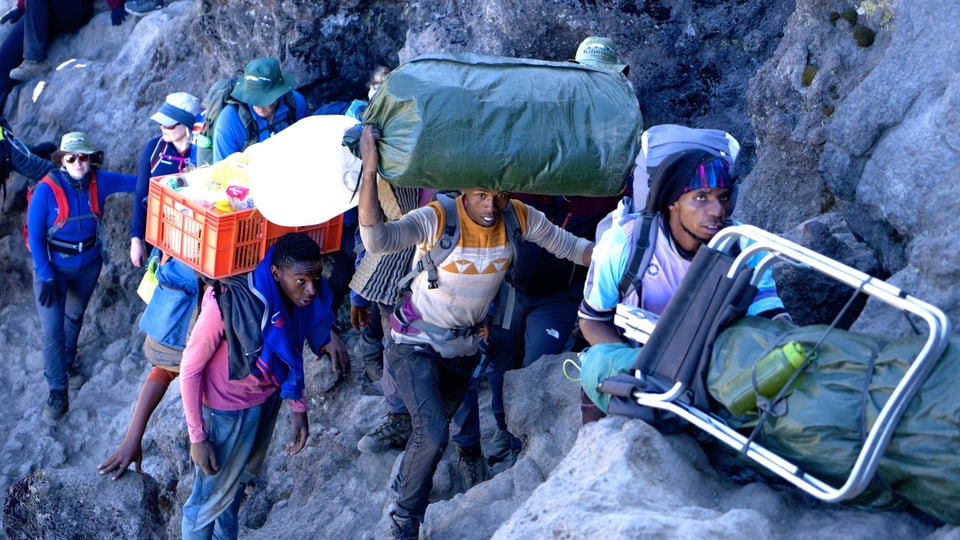
Legend:
They make the climb possible: local porters on Kilimanjaro.
SRF
The competition between carriers is fierce. Very few people do the job because they love the mountains. They need the money to feed their families and send their children to school. This gives the participants something to think about. Fabian Schibler sums it up like this: “They don’t say that they like doing the job or because they want it, they’re all sad reasons why they need it.”
The influx of tourists is only controlled on the so-called Coca-Cola route because the sleeping spaces in the huts there are limited. The route is called Coca-Cola because until 15 years ago the porters still carried Coca-Cola to the huts, a service that has since been abolished.
There are no restrictions on the other routes where you can spend the night in tents. The crowd is correspondingly large.
During Corona, tourism on the mountain practically collapsed completely, but outdoor activities are booming and the number of visitors has returned to pre-Corona levels of 70,000 per year. But the Tanzanian government wants even more: in the future, 150,000 tourists are expected to make a pilgrimage to Mount Kilimanjaro every year.
From the government’s point of view, this is understandable, because every tourist pays an entrance fee of 1,100 dollars (around 952 Swiss francs) to the park. Together with the sought-after tourism destinations Serengeti and Zanzibar, tourism accounts for over 30 percent of Tanzania’s export earnings.
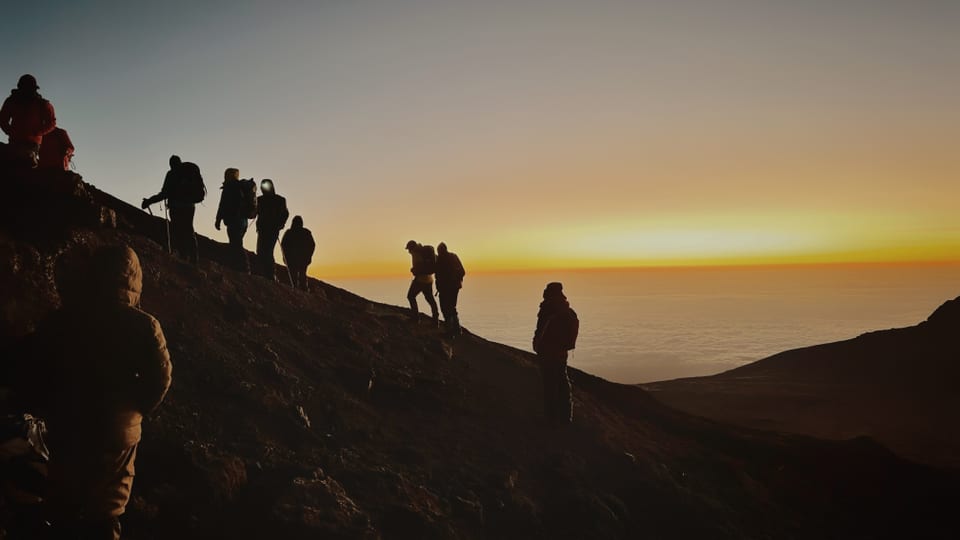
Legend:
Climbing Uhuru Peak at dawn.
SRF
But whether the money will actually be spent on fighting poverty, as the government says, is questionable. In any case, the experience of nature would be massively restricted with even more tourists.
The many people on the mountain are also putting more and more pressure on the environment. The park administration is trying to ensure that the same conditions do not soon prevail on Kilimanjaro as on Mount Everest.
All groups must have their waste weighed upon arrival and departure from each camp so that they cannot throw anything away in between. Anyone who leaves something behind will be fined and there is actually relatively little rubbish lying around in the camps and on the routes.
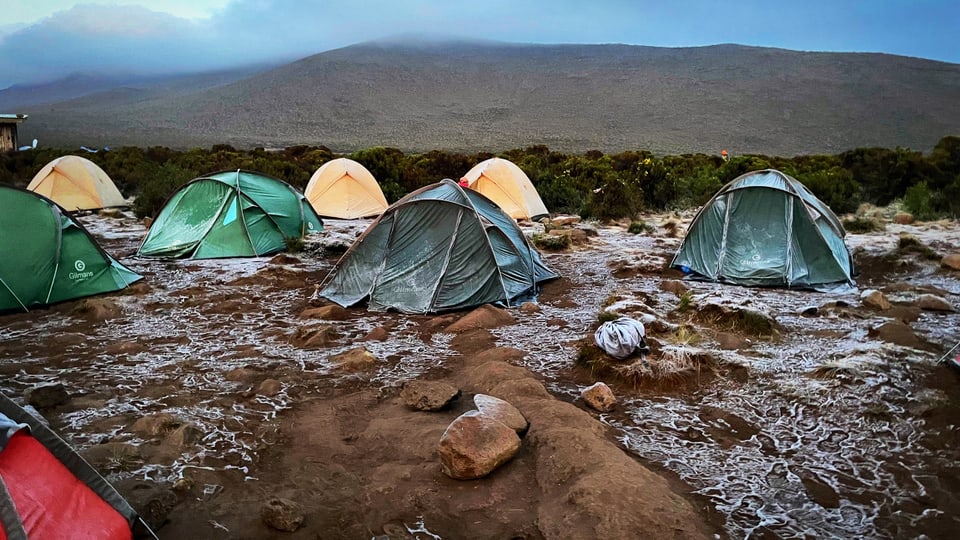
Legend:
Trekking on Kilimanjaro can be frosty, but tourists are prepared to endure the hardships.
SRF
But nature suffers for another reason: the many feces that people leave behind are causing problems. There are only toilet facilities in the camps, on the hiking routes, especially in the higher regions, there is toilet paper lying around everywhere and it smells of urine.
Even if the SRF group takes their paper with them again: “Many tourists think that the toilet paper dissolves when it rains. But this is an alpine desert, it doesn’t rain much here,” explains Augustin Peter, mountain guide and brother of Priskus Peter.
The rainy season is from March to June and October to November, but climate change is also noticeable in Tanzania.
It is raining less than before, Augustin Peter continues. Drinking water on the mountain is also slowly becoming scarce. Water used to be found five minutes from the camp, but today porters have to walk half an hour to the nearest spring.
The government has so far made no move to address the problem. The mountain guides and porters are aware of the changes, but support the planned expansion of tourism because it brings them money.
“If we want to increase tourism revenue, you can’t say it’s too much. It’s jungle and desert here, there will always be enough space to set up tents,” says Augustin.
Only a cable car to Shira Peak, a mountain in front of the Kilimanjaro massif, was prevented together with the trekking organizers and environmental protection organizations.
But if the government sticks to its expansion plans, it will probably be a matter of time before cables for electrical energy and water pipes, if not even improved roads, line the hiking trail on Kilimanjaro.
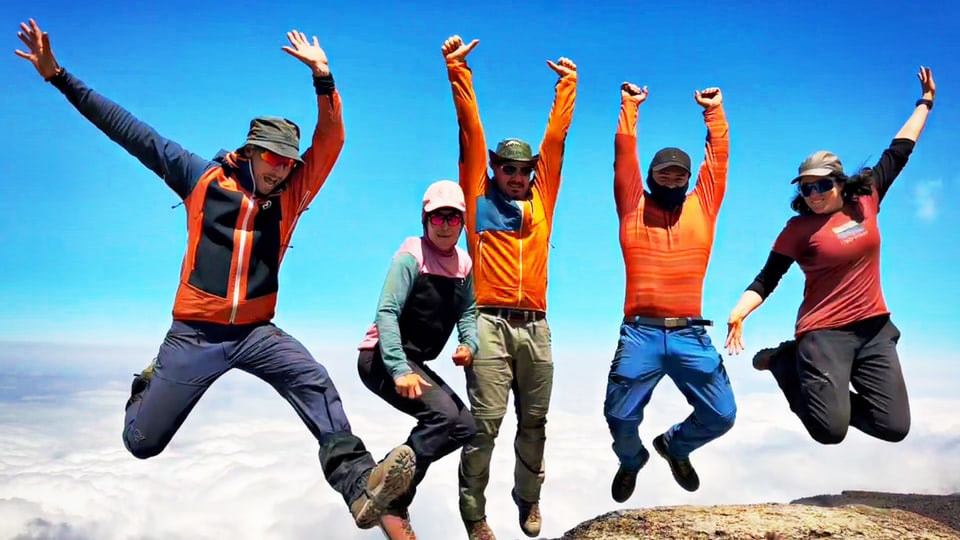
Legend:
Jumping for joy over the sea of fog.
SRF
Not a good prospect. The feeling of happiness at the moment when the group made the final climb to Uhuru Peak, the summit of the mountain, after six hours and 1,300 meters in altitude, will no longer be the same. Overcoming hardships and hardships is also part of the adventure.
Daniel Bertschinger: «It’s definitely out of your comfort zone and every step was worth it. It’s incredible here, so beautiful. I can understand everyone who succumbs to this virus and says I’ll be back or I’ll climb more mountains. So above the clouds… freedom!”
The participants who made it fall into each other’s arms exhausted and agree: “This is one of the most beautiful things we have ever done in our lives.”
